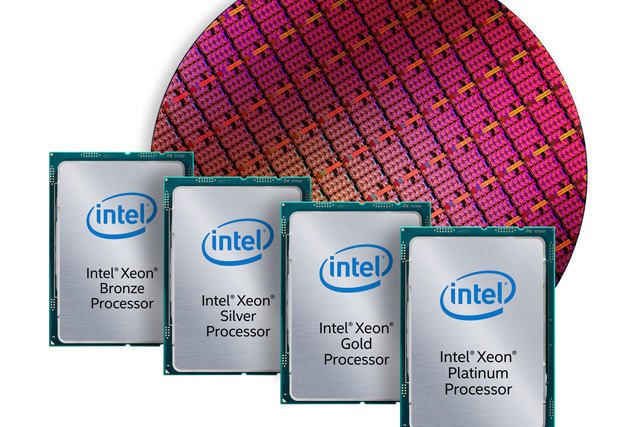
Xeon processors have always been expensive, but they’re not aimed at consumers or even deep-pocketed hardware enthusiasts. They’re designed with enterprises in mind. Because of that and some of their additional features, the price tags tend to be exorbitantly more than their desktop counterparts.
If you compare the 8180M with Intel’s top-end and newly released Core i9-7900X, for example, the specifications differences are huge. While the latter chip sports 10 cores and 20 threads, the former has almost three times as many of each. While that doesn’t necessarily justify the $12,000 different in pricing, it does go some way to explaining it.
Not all of Intel’s 16 new Platinum processors detailed under the new metallic branding, are as expensive of course. The range starts with a CPU with 16 cores at 2.8GHz turbo for $3,155, all the way up to the $13,000 monster. You can save $3,000 at the top end if you ditch the extended DRAM support of the M version of the 8180, which many may choose to do, but few of these CPUs could be considered cheap.
Indeed the top end offering, with its near 40MB of L3 cache, is almost twice as expensive as the top-end Xeon processor from the previous generation (thanks Anandtech). It’s likely that the companies that buy these chips in bulk won’t pay a list price, but even factoring that in, this generation has had a big price jump over its predecessor.
For companies not looking for the out-and-out top-tier performance and flexibility of Platinum CPUs, the Gold range — which may show up in future iMac Pros — isn’t too far off in features. It offers up to 22 cores with a frequency of 3.7GHz on its 6152 CPU. It’s also far, far cheaper, with a price tag of ‘just’ $3,655.
The actual list of Gold options is extensive, if a little confusing as a result. It’s split into the 6XXX series and 5XXX series, with a total of 32 chips between them. That gives manufacturers and businesses a lot of options, though they’ll need to know specifically what they’re looking for, as Intel has options for long-life products, extended DRAM functions, various power draws, and more within the range.
It will be interesting to see if that complexity aids the competition in AMD’s more streamlined Epyc range of CPUs. Time will tell.
Editors' Recommendations
- Intel’s new CPU feature boosted my performance by 26% — but it still needs work
- You might not be able to afford Intel’s new Core Ultra CPUs
- Intel is preparing to launch a beastly new 16-core CPU
- Intel’s Alder Lake Core i5 could be the new go-to budget gaming CPU
- New Intel Raptor Lake leak shows 24-core CPU coming in 2022




